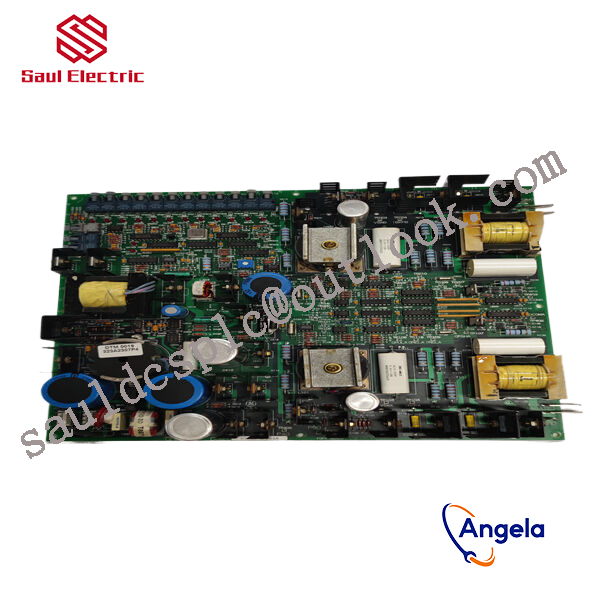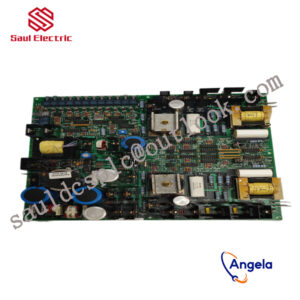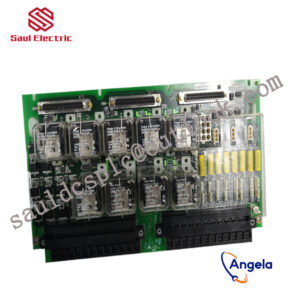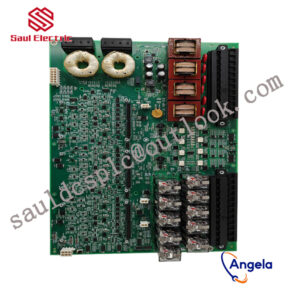Description
IS415UCVHH1A Product Introduction
The specific application scope of the product
will depend on the needs of system integration and industrial application, but generally speaking, this type of embedded controller module can be applied to the following categories:
manufacturing processes, etc.
monitoring and control system.
of the controller module, as well as the specific needs of the customer.
designed to manage gas or steam turbines.
It has a CIMPLICITY graphical interface and an HMI with software suitable for running heavy-duty turbines.
be installed at the bottom of the cabinet. For a small setup that is easy to serve a triple redundant system, up to three components can be installed side by side.
he board can operate within a temperature range of 0 to 65 degrees Celsius without the need for a fan for cooling. NFPA Class 1. This board can be used for two applications.
Domestic Industrial Robot Industry Trends in 2020 my country’s market still contains huge powerIn 2016, the density of industrial robots in my country was 68 units per 10,000 people. In 2018, the density of industrial robots was 140 units per 10,000 people, which is higher than the global average of 99 units. According to the “Robot Industry Development Plan (2016-2020)”, the density target of domestic industrial robots in 2020 will reach 150 units/ten thousand people, and market demand will be further released. In addition, in the long run, the density of industrial robots in my country is far smaller than that of several developed countries with higher levels of automation, and the domestic market demand still contains huge development potential in the future.Strong market demand has driven China to become one of the main sources of income for the four major families of Germany”s KUKA, Switzerland”s ABB, Japan”s FANUC and Yaskawa. As the world”s largest industrial robot market, China has attracted the collective attention of the four major families, and its business in China has also become an important engine for the growth of the four major families” business income.1. The four major families account for 40% of the global market and nearly half of the market in China.Globally, the first echelons in the field of industrial robots are KUKA of Germany, ABB of Switzerland, FANUC of Japan and Yaskawa.The revenue of the four major family robot businesses continues to grow, accounting for nearly 40% of the global market share. From 2006 to the present, except for 2009, when the four major families suffered a sharp decline in revenue due to the aftermath of the financial crisis, the remaining years have seen steady growth. From 2010 to 2017, the CAGR of the robot business revenue of Yaskawa, ABB, KUKA, and FANUC was 6.58%, 11.05%, 12.96%, and 10.74% respectively, which is basically consistent with the growth of the global industrial robot market. The robot business of the four major families has always occupied the main global robot market. In recent years, affected by the rise of manufacturers in the robot segment and the rapid development of Chinese robot manufacturers, the market share has gradually declined, but it still remains above 40%. In 2016, the four major families” global robot business The revenue proportion is 41.19%.The four major families account for more than half of the domestic marketThe four major families have different business focuses. KUKA”s business mainly focuses on robots and system integration, which are widely used in the automotive field and have core customers such as Mercedes-Benz and BMW. ABB focuses on electric motors and motion control, which are used in the electronics, electrical and logistics industries, and are also widely used in highly mature automobile production lines. FANUC CNC system technology leads the world, and its process control is more efficient and convenient than other companies. Yaskawa mainly focuses on the fields of servo motors and motion controllers, and is the first company in Japan to manufacture servo motors.In 2012, foreign robot companies represented by the four major families of ABB, KUKA, Yaskawa Electric, and Fanuc accounted for more than 90% of the Chinese robot market. Among the 90% of the robot market share, the four major families of ABB, Fanuc, Yaskawa Electromechanical, and KUKA account for 57.5%. The next three major manufacturers, OTC, Panasonic and Kawasaki Heavy Industries, accounted for 16%. The market share of domestic robot manufacturers is relatively small. According to statistics from Huachuang Securities, the market share of local brand robots in 2012 was only 8%.According to IF R statistics, the total installed capacity of China”s local robots in the domestic market increased from 22% in 2017 to 27% in 2018; while the installed capacity of foreign brands (including products produced in China by non-Chinese suppliers) declined 7%. At present, my country”s industrial robot market is still dominated by foreign brands. The domestic market share of the four major families has not changed much compared with 2012. In 2017, the domestic market share of the four major families reached 57%. In 2017, the market share of the four major families in China was Fanuc (18%), KUKA (14%), ABB (13%), and Yaskawa (12%). However, as the proportion of domestic manufacturers in the domestic market increases year by year, accounting for around 30%, although there is still a gap compared with the four major families, the progress of domestic manufacturers cannot be underestimated. As the four major families gradually strengthen their presence in the Chinese market, their market share in the domestic industrial robot market will remain at a high level.As the world”s largest industrial robot market, China has attracted the collective attention of the four major families, and its business in China has also become an important engine for the growth of the four major families” business income. Taking Fanuc as an example, the company”s revenue in China in 2017 increased from 6.63 billion yuan in 2016 to 12.75 billion yuan in 2017, an increase of 92.3%, driving the revenue in Asia (excluding Japan) to account for 45.4%, a year-on-year increase 9.1%, ranking first. In addition, the Chinese market accounts for 21% and 20% of the overall sales of Yaskawa Electric and KUKA Robot respectively, making it one of the important sources of their sales revenue.
IS200VSVOH1B From General Electric in the United States
IS230TVBAH4A High performance processor module GE
IS210AEBIH1BAA GE power control board
IS200VRTDH1DAC From General Electric in the United States
IS200TSVCH2ADC Gas turbine system Mark VI
DS200LRPAG1AAA Gas turbine system Mark VI
DS215TCQAG1BZZ01A I/O excitation redundant module GE
DS200DCFBG1BLC I/O excitation redundant module GE
IS210BPPCH1AC Processor/Controller Mark VI System
IS210AEBIH1BED From General Electric in the United States
IS200ISBEH2ABB GE power control board
IS200VPWRH1AF GE power control board
IS200ERRRH1A Gas turbine system Mark VI
IS200VTCCH1CBB High performance processor module GE
IS200TBACIH1B Gas turbine system Mark VI
IS200VTCCH1CBB GE power control board
IS200RCSBG1BAA From General Electric in the United States
IS200ICIAH1ABB From General Electric in the United States
IS200TREGH1B GE power control board
IS215UCVEH2A Processor/Controller Mark VI System
IS200ISBBG2AAB Processor/Controller Mark VI System
IS200TREGH1BDB Gas turbine system Mark VI
IS220PVIBH1A I/O excitation redundant module GE
DS200CTBAG1ACC From General Electric in the United States
IS200BPIAG1AEB From General Electric in the United States
IS200ERRBG1A High performance processor module GE
IS200VSVOH1BDC I/O excitation redundant module GE
DS200TCCAG1BAA GE power control board
DS200TCTGG1AFF GE power control board
IS200EXHSG3AEC High performance processor module GE
IS200TPROS1CBB High performance processor module GE
IS200EXAMG1A Gas turbine system Mark VI
IS220PDOAH1B I/O excitation redundant module GE
IS200WETBH1BAA GE power control board
IS200VCMIH1BCC Processor/Controller Mark VI System
DS200UCPBG6AFB Processor/Controller Mark VI System
IS200TRLYH2C I/O excitation redundant module GE
DS200TCQAG1BEC Processor/Controller Mark VI System
IS215SUCVEH2AE Gas turbine system Mark VI
IS230TBAIH2C High performance processor module GE
IS200ECTBG1ADE I/O excitation redundant module GE
IS200JPDPG1A GE power control board
IS200TBCIH1BBC High performance processor module GE
IS200TREGH1BDC I/O excitation redundant module GE
IS215UCVEM09A Gas turbine system Mark VI
IS200BICIH1ADB Processor/Controller Mark VI System
IS215ACLEH1A High performance processor module GE
IS200SAMBH1A Gas turbine system Mark VI
IS200TREGH1B I/O excitation redundant module GE
IS220PTCCHIA Processor/Controller Mark VI System
IS215PCMIH1AC Gas turbine system Mark VI
IS220PTURH1A GE power control board





